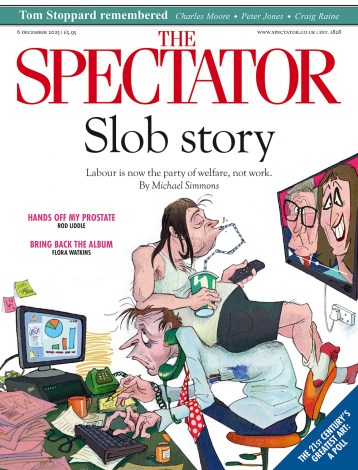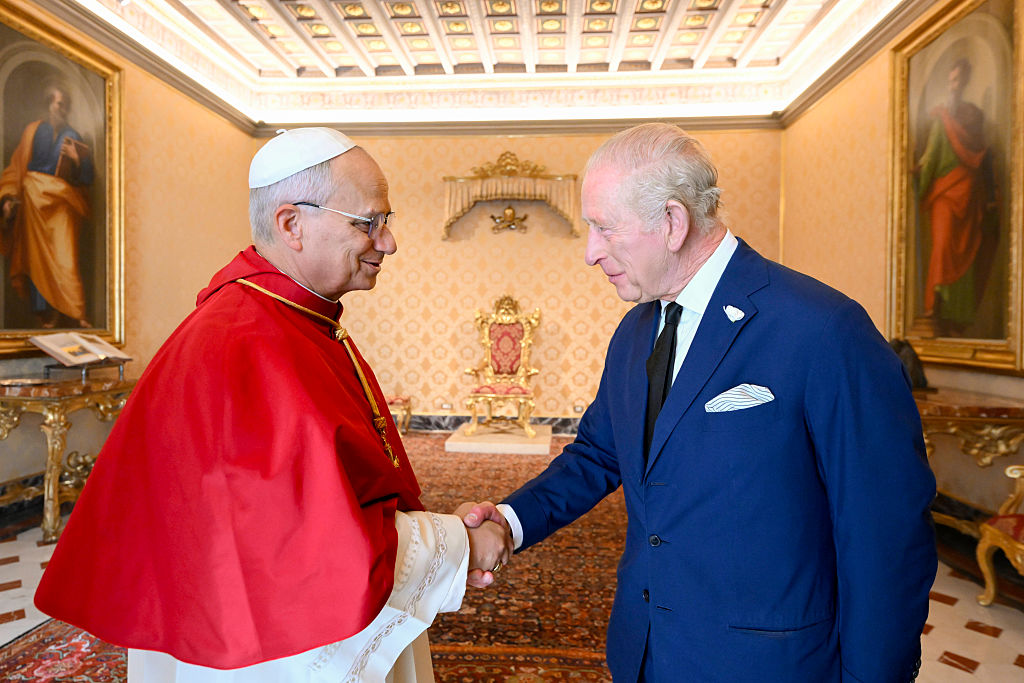In any other week – or month, or year – King Charles’s visit to Rome would have been a truly seismic occasion, laden with symbolism and religious importance. Some may have recalled the unexpected significance of that great Father Ted line, ‘That would be an ecumenical matter’, when the news was announced that the King would be praying with Pope Leo XIV. The moment where the monarch and the pope came together in the Sistine Chapel in worship, and thereby celebrate the Papal Jubilee, was an unprecedented one.
In this, as in many other regards, Charles’s reign represents a break from tradition
Not since Henry VIII created the schism between the Church of England and the Catholic Church has there been such a meeting of ruler and pontiff. Granted, it has been a considerable while since there was any actual tension between the two major faiths, and Elizabeth II met most of the various popes during her reign. But it would have been considered a step too far for her to have knelt and worshipped with one of them. In this, as in many other regards, Charles’s reign represents a break from tradition. He is the most religiously-minded ruler that there has been in a considerable period, and it is certain that this initiative would have come directly from him, rather than a courtier or politician, let alone the newly installed Archbishop of Canterbury.
The event itself was supposed to take place in April, but the illness and subsequent demise of Pope Francis meant that his successor, the first American pope in history, had the honour of being the prelate who, symbolically at least, brought the King back into Rome. Charles’s interest in all faiths, not just Christianity, is sincere and genuine – he is, after all, someone who was quick to visit the synagogue in Manchester that recently suffered an anti-Semitic attack, and he serves as patron for the Oxford Centre for Islamic Studies, which he visited in July this year. And so the opportunity to build bridges between Anglicanism and Catholicism was one that he would never have passed up.
There will be much commentary on the choice of traditional black attire for the Queen, including a veil, and the faintly incongruous presence of Home Secretary Yvette Cooper, who has made relatively few public remarks about faith but nonetheless read St Paul’s Epistle to the Romans. However, from any perspective, the event has gone exactly as both the Pope and King would have liked it to, and it will be regarded as a truly historic moment for all parties involved.
Unfortunately, it runs the risk of being overshadowed by the other royal news story of the moment, and that is the continued disgrace of Prince Andrew. Amidst revelations that the government are taking an increasing interest in the question of whether the banned old Duke of York should be allowed to remain a tenant of Royal Lodge – and as the Firm braces itself for further embarrassing revelations over the coming days about his links with Jeffrey Epstein, the reality is that the international media are far more interested in the King’s younger brother than they are in the monarch’s activities, however important and worthy they might be.
This may seem short-sighted and ignorant, and it almost certainly is. The reunion of monarch and pope is vastly more significant from a historical perspective than anything that Andrew may or may not have done, which is ultimately a scandal that will be forgotten in a few decades. However, while Charles and Leo may have been praying for the forgiveness of sinners, the redemption of one alleged malefactor rather close to home may be a step too far, even on this most important of occasions.







Comments